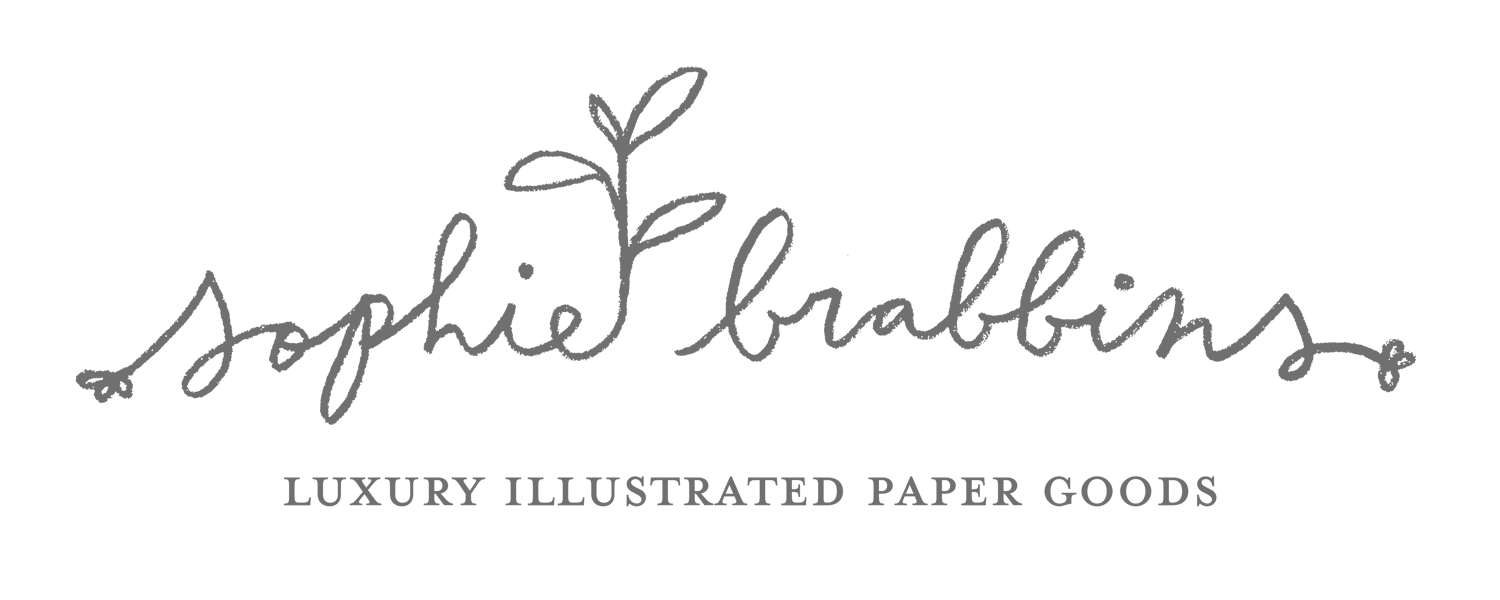Starting out as an illustrator (Part 1)
Being an illustrator or designer could be considered the ideal job. “What, you actually get paid to paint and draw - that’s amazing?!” It sounds idyllic doesn’t it? I know when I first started out I certainly had a lot of romantic notions of sketching and painting my days away. However the prospect of actually making a living from your art can be a little sobering.
I often get asked what steps I took initially to become freelance and what advice I would give to anyone who is thinking of starting out on their own. I think for everyone this journey is a little different but this post reflects my own experience in the industry and that of fellow freelance friends. I also feel that this may be one of those topics that is too big for just one post so I may do a follow up too.
Anyway. Ready? Let’s go!
The First steps
- Branding
- Website
- A portfolio of work that reflects the kind of work you want to be hired to produce
(I actually remember making a very similar bullet point list to this when the idea of being my own boss first came to me)
Developing a brand
One of the very first things I did when starting out was make sure I had a brand identity (logo). This not only made me feel more professional but also really tied together my illustration style and personal style into a professional image. I started out by asking a friend with very lovely hand writing to design one for me. I would’ve loved to have good enough typography skills to draw my own but unfortunately, it’s not something that comes that naturally to me. My current logo is my second one which I commissioned a graphic designer to design for me. But especially if you’re starting out and want to save a few pennies here and there working on your own can be a great way to develop really unique branding that naturally ties in with your style.
Website
Having a website might seem a little less relevant when we have so many social media platforms including portfolio based apps but for me certainly my website has been key. Not only to serve as a portfolio and a point of contact to prospective clients but also to direct any social media from. For example I make sure I pin my designs on Pinterest from my website so they can be traced back to me. That being said your website doesn’t have to be anything flashy. I made my own website initially although looking back it was a little primitive in comparison to my site now. But I would say that says more about my web design skills than it does about the difficulty of building a site yourself. However if like me your design skills don’t extend to website building I would definitely recommend looking into commissioning other freelancers and small businesses. Not only can this be more cost effective than approaching a design agency, but for me it’s also been a great way to make friends in the creative community and support like minded people in their businesses.
Producing the kind of work you would like to be hired for
Sounds simple right? Not necessarily...
When I graduated although I felt like a lot of my portfolio did reflect my style and I would like to produce more work like that I did feel that my portfolio was pigeonholing me as just a surface pattern designer which was fine but I also wanted to do more illustration commissions rather than just patterns. So I decided to do a couple of self initiated projects that filled the gaps I felt there were in my portfolio. At the time it felt risky because my paintings can be time consuming and it wasn’t something I was being paid for but it turned out to be seriously rewarding and is something I still do if I want to show examples of new work I would like to be commissioned for. I find that working on self initiated projects can also refresh you if you’re feeling a bit uninspired or creatively frustrated and it’s a great habit to get into if you can find the time.
The financial safety net
I remember this is the one (crucial) thing that no one ever mentioned when I was at University but it’s also one of the most important. Okay I am just going to say it. It’s pretty much impossible to walk straight into freelancing and make enough money to support yourself. (Sorry it’s just the way it is)
Having a job on the side whether it’s working full time and designing in your free time or just working part time is absolutely essential. Building an established and regular client base takes a bloody long time (years in fact) and without some sort of financial stability whilst you do this it’s near impossible. I have done a lot of a few different things alongside what I do now and that’s okay. It’s easy to put yourself under a lot of pressure especially when you’re first starting out and I definitely fell victim to this! I think I spent pretty much the whole first year of being freelance in a huge stress trying to prove to myself and everyone else that I could make a living from my illustrations. But the truth is panicking about money can really suck the joy from your creativity and also doesn’t help you progress. Having that safety net of enough money to cover your bills can take the pressure off and also allow you to take your time to build those long lasting relationships with clients.
To be continued ....




